Another part from my trip to Sweden is here. This covers the second visit to Stockholm and the Butterfly house and aquarium we saw.
A few pics from the city:
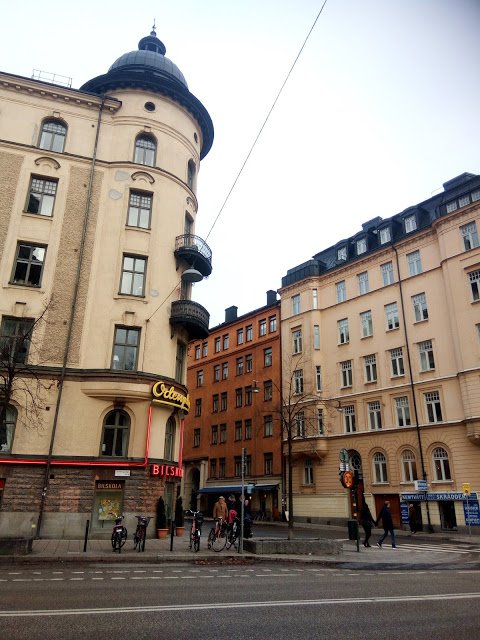
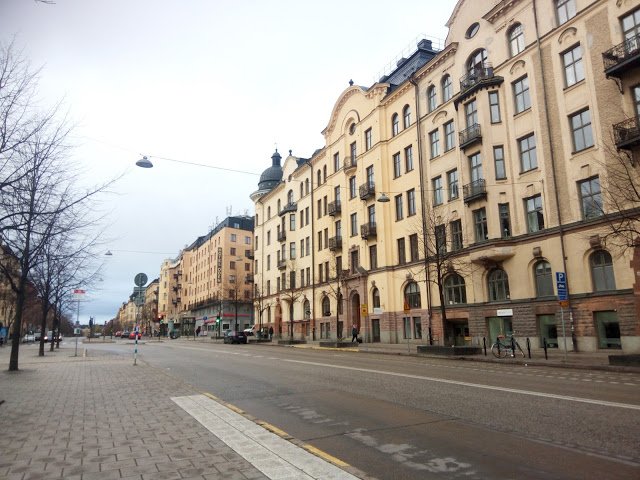
And now let's get into the amazing world of animals!!
Beware of that super-dangerous crocodile and let's go to say hello to the turtles (Hey, where's Michelangelo? Ah! There in the corner!)
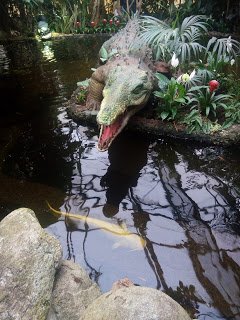
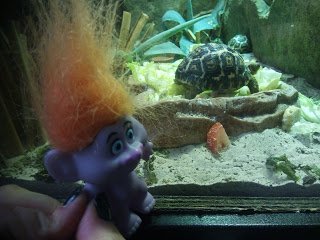
How about some huge slugs and centipedes?
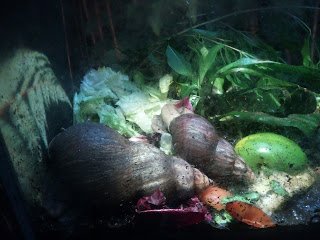
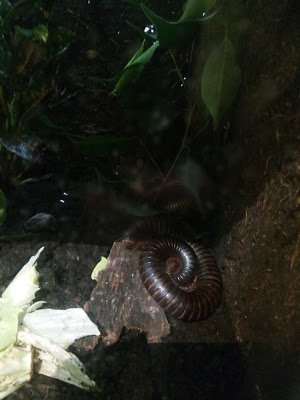
An axolotl!! They're my favorites! Too bad they didn't have a pink one :(
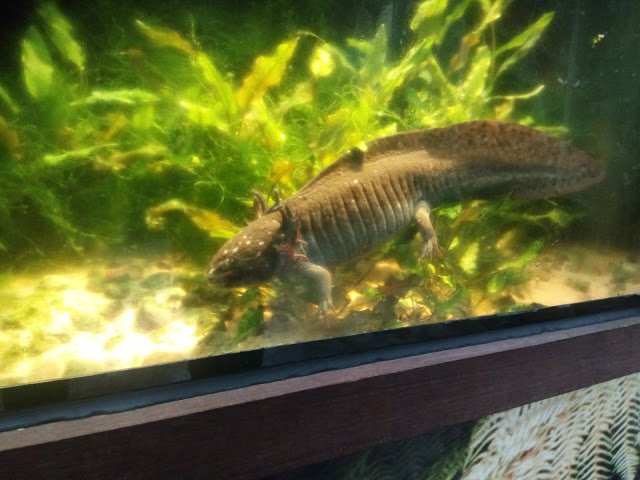
Those real-life pokemons are salamanders that refuse to grow! Axolotls keep features of their larval stage (their tadpole-like dorsal fin and gills) as part of a condition called neoteny. Unlike other salamanders, axolotls are aquatic animals and live in the lake complex of Xochimilco (in South America, near Mexico City). Only in rare cases an axolotl may reach maturity and leave water. Even though they have lungs, they use their gills and skin (to a smaller extent) to breathe.
Axolotl colors vary from black to brown with spots but you can also come across white or albino ones (I love albinos). They feed on some fish species, mollusks, crustaceans, worms and insect larvae. Their population is on the decline though as they've been starving due to larger fish coming to their habitats, which have been either got contaminated or drained (because of the population rise in Mexico City). Axolotls may also end up on a mexican dish, another fact that adds to their becoming endangered.
Real-life Prometheus: Axolotls are among the most studied species. Their abilities to heal and regenerate are amazing and have fascinated scientists. Those animals can fully grow a limb back! [source 1 - source 2]
And there they are...the tremendous piranhas!!
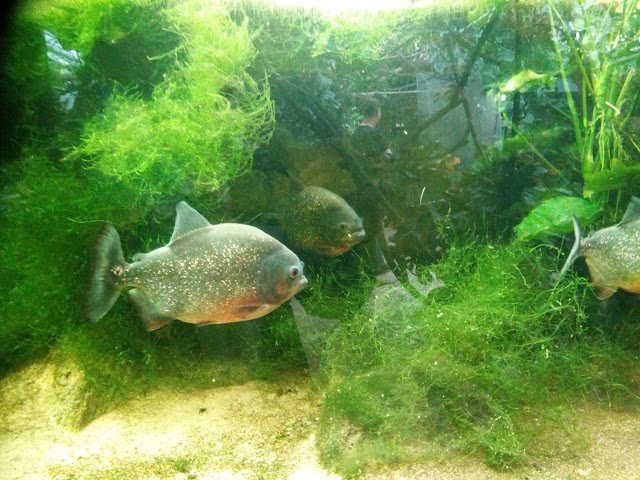
Those little swimming Hannibals are found in rivers and lakes of South America. Piranha in Brazilian means "tooth fish", a name well-justified by the razor-sharp teeth piranhas have. They are infamous for their feeding frenzy. Piranha mealtime makes the water look as if it's a pool of boiling blood. Their jaws are really strong and they have been recorded as the strongliest bitting bony fish (the black piranha). They live and travel in groups, probably to be able to prey on poor creatures with their unique ravenous style and fight off ambitious predators. Their youngs though are almost defenceless and become food for other animals. During the dry season in the Amazon, the piranhas population cannot escape the drying pools and get asphyxiated by the lack of oxygen or end up in the stomachs of the herons and caimans of the area, whose vulnerable youngs had formerly been a delicacy for adult piranhas (revenge is a dish served...dry).
Misunderstood: Some piranhas are herbivores (See? Prejudice everywhere). There are also some omnivore species and others that eat crustaceans, shrimps, carcasses, worms and other fish. Human attacks are a rarity.
Did you know: Some people keep piranhas as pets and this might be the cause why piranhas have been spotted elsewhere on the planet than South America. (Next time your kid asks you for a goldfish, surprise them and get them a cute piranha!) [source 1 - source 2]
Irrelevant question: Is the 1978 movie worth watching? Tell me in the comments :P
And now we're visiting the Butterfly Room. Consider this the changing room :P
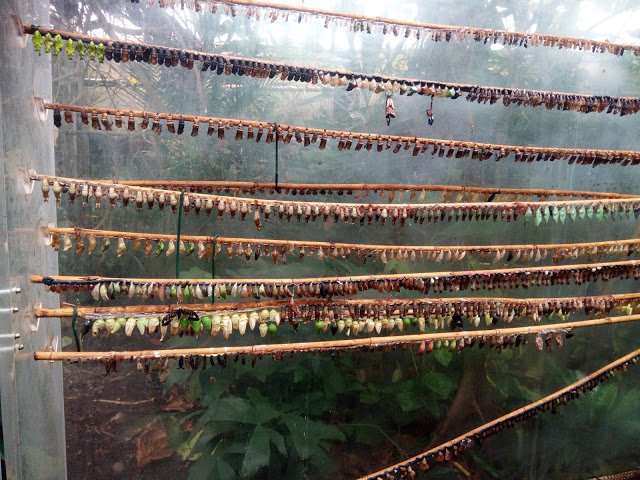
Watch those gigantic pupae! I almost mistook them for bats.

Butterflies go through many transitional phases during their life. They begin as eggs, continue to larvae, then shield themselves as pupae and spread their wings in adulthood. Butterflies lay their eggs under leaves. They are really really small and round or oval and if you happen to find any and have a magnifying glass on you, you can even see the tiny caterpillar "fetus" growing inside! (How cool is that?)
When the eggs are hatched, the greedy larvae come out. During this stage of their life, the larvae mostly eat, they start doing so from the very leaf they were born on. They are trying to build up a strong stock of nutrients to get them through their last (and usually the most impressive) metamorphosis. Larvae eat and grow and as they grow they need bigger "outfits", so they shed their exoskeleton several times before they retire in their cocoons.
There comes the time when the larvae have reached their maximum growth and they have to go through one last transition: Metamorphosis. The larva will shield itself in a protective cocoon and will become a pupa or chrysalis. The outside of their cocoon will be hard and stiff to protect the chrysalis from predators and extreme weather conditions. Once again, just like in the egg stage, the butterfly-to-be will not be able to react to whatever happens around it. The pupa will take from weeks to several months as its whole body turns into something completely new and different. It will change top-to-toe (kind of), inner organs, limbs and tissues, everything will be "reprogrammed" before the butterfly is able to face the world again.
The newborn (?) butterfly will start coming out of the chrysalis. It won't look like any beautiful butterfly we know though. Its wings will be soft, wet and all wrinkled as they had to be folded to fit inside the chrysalis. As soon as the wings get dry, the butterfly can use a liquid in their body to "pump" them and make them functional. Now it is ready to fly away and find a mate to reproduce and keep the cycle of life rolling... [source 1 - source 2]
Do you know the differences between moths and butterflies?
Although they belong to the same species (Lepidopterae), moths are nocturnal and spread their wings or flatten them against their body. Butterflies are diurnal and fold their wings back. Moths make silk-weaved cocoons, whereas butterfly pupae are smooth, hard and have no silk at all. Moths are more "primitive-looking", their antennae are feathery or comb-like and their bodies are fuzzy and stout in comparison with the slender and smooth butterflies that have thin antennae. Their colors differ as well, with the butterflies being more bright and vibrant than the moths. All in all, a moth is like the ugly hairy cousin of a butterfly (like the homo neaderthal of butterflies). [source]
But those disgustingly looking cocoons turn out to be these amazing creatures! Aren't they beautiful?
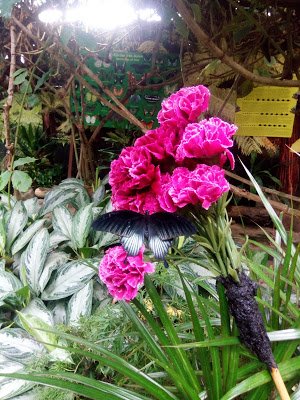
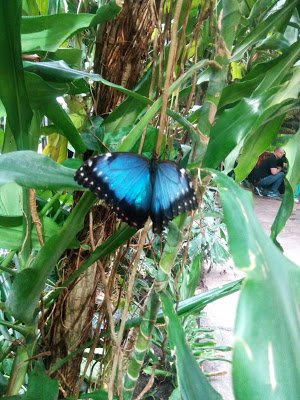
Feeding time! What do you think of this "special" dining room?
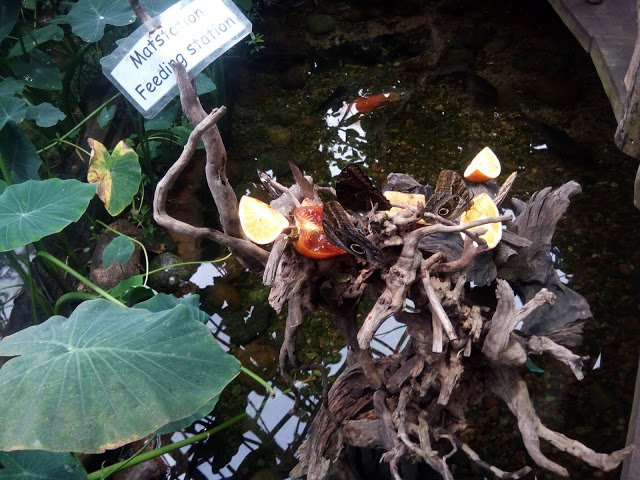
Ok, enough with the butterflies. I heard they have sharks in the other room!

It seems like Nemo and his friends live in this aquarium!
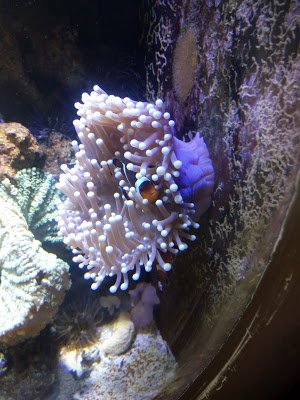

Found in the australian coral reefs, southeast Asia and southern Japan, clownfish inhabit anemones (a marine creature that anchores on the seabed and uses its tentacles to catch food). Although the anemones secrete toxins through their nematocysts, clownfish are immune to them. A symbiotic relationship with a mucus allows them to have a protective "membrane" over their body that helps them move around the stinging tentacles. Their youngs live in the anemones until they grow enough and get out and around their anemone to hunt for food. They are omnivores and eat small crustaceans, worms, algae and zooplankton.
Transgender feminists: All clownfish are born males, but they have the ability to switch sex (only once and for good) in order to reproduce. Two males will make a couple and then the larger and more dominant will switch to become female.
The dominant female will lead the group of smaller males and the second bigger fish will be the dominant male. In case the mistress dies, the dominant male will become a female and replace her. The next larger male in line will take his place after that. [source]
Those super small sea stars look like fake snow snowflakes!

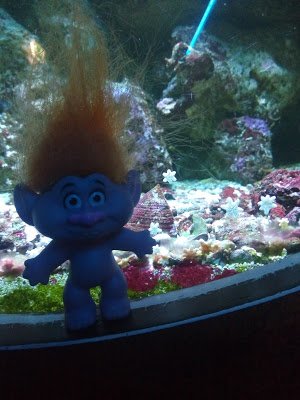
Before we close this part, I'm giving you some more photos of my strolls around the centre. This is the Nobel Prize Museum:
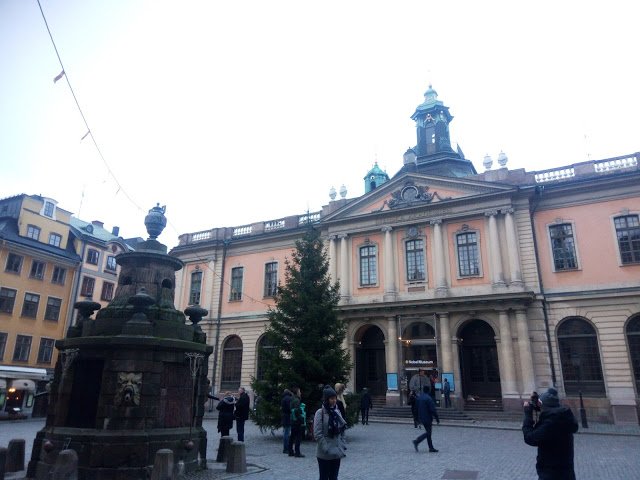

A few more shots of a central street with souvenir shops:
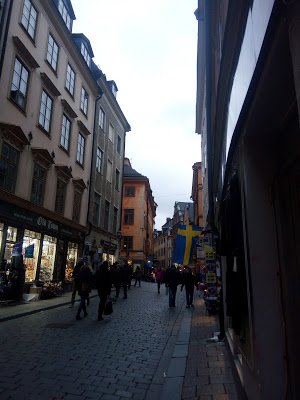
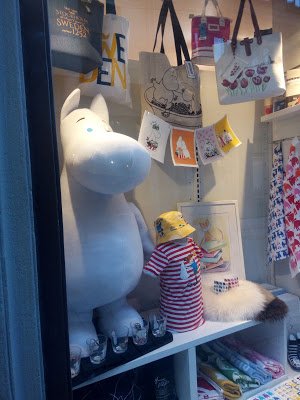
This poor snowman looks like he escaped from a Tim Burton's movie...
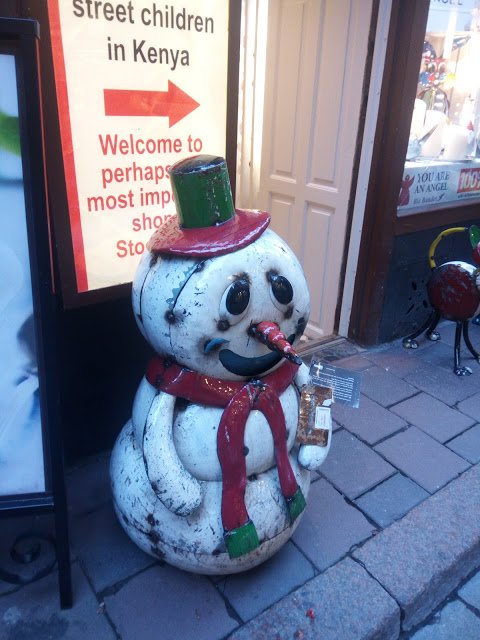
Some shots from a german church:
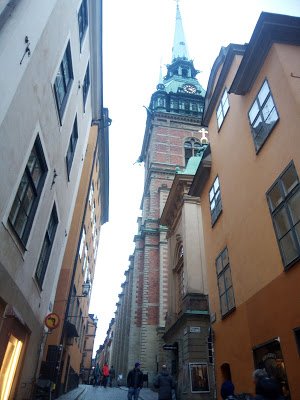


I got in at closing time, so I didn't have the chance to take more photos, I spent my few minutes in just admiring the fantastic paintings on the ceiling and walls... (I must say I got a little angry with the lady that kicked me out 10 minutes before the official closing time that the sign at the entrance mentioned. I could have stayed a bit longer, the atmosphere in there was really something else.)
Stockholm was wonderful! I wish I could have stayed there at least five more days, because I feel like I didn't get to see even a 10% of what's really worthy. Who knows, maybe in the future I'll get the chance to visit again...maybe I'll set out to new adventures somewhere else. One thing is for sure, travel! As much as you can! Feed your eyes with images, your ears with sounds and your soul with people!
*All images by @ruth-girl

Thank you for being here and reading this. If you like my writing, you can visit my blog for more ;)
My recent posts:
* A Taste Of Sweden (Part 3 - Stockholm Aquaria)
* Bizarre Natural Phenomena Vol.33 - Barbie's Lake (Australian Lake Hillier)
* Atopic Dermatitis - The Bummer!
* Let's Learn Something Cool - The Solar System (The Trolls Are Back!)
* Did You Watch Tonight's Supermoon?
* La Petite Fille De La Mer - A Short Story
Special thanks and mentions:

Until my next post,
Steem on and keep smiling, people!

